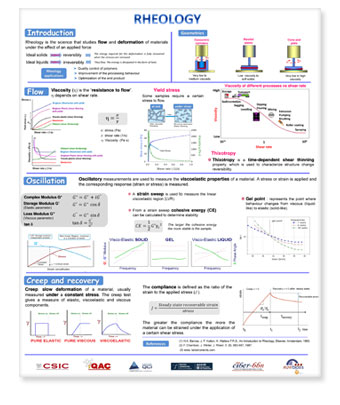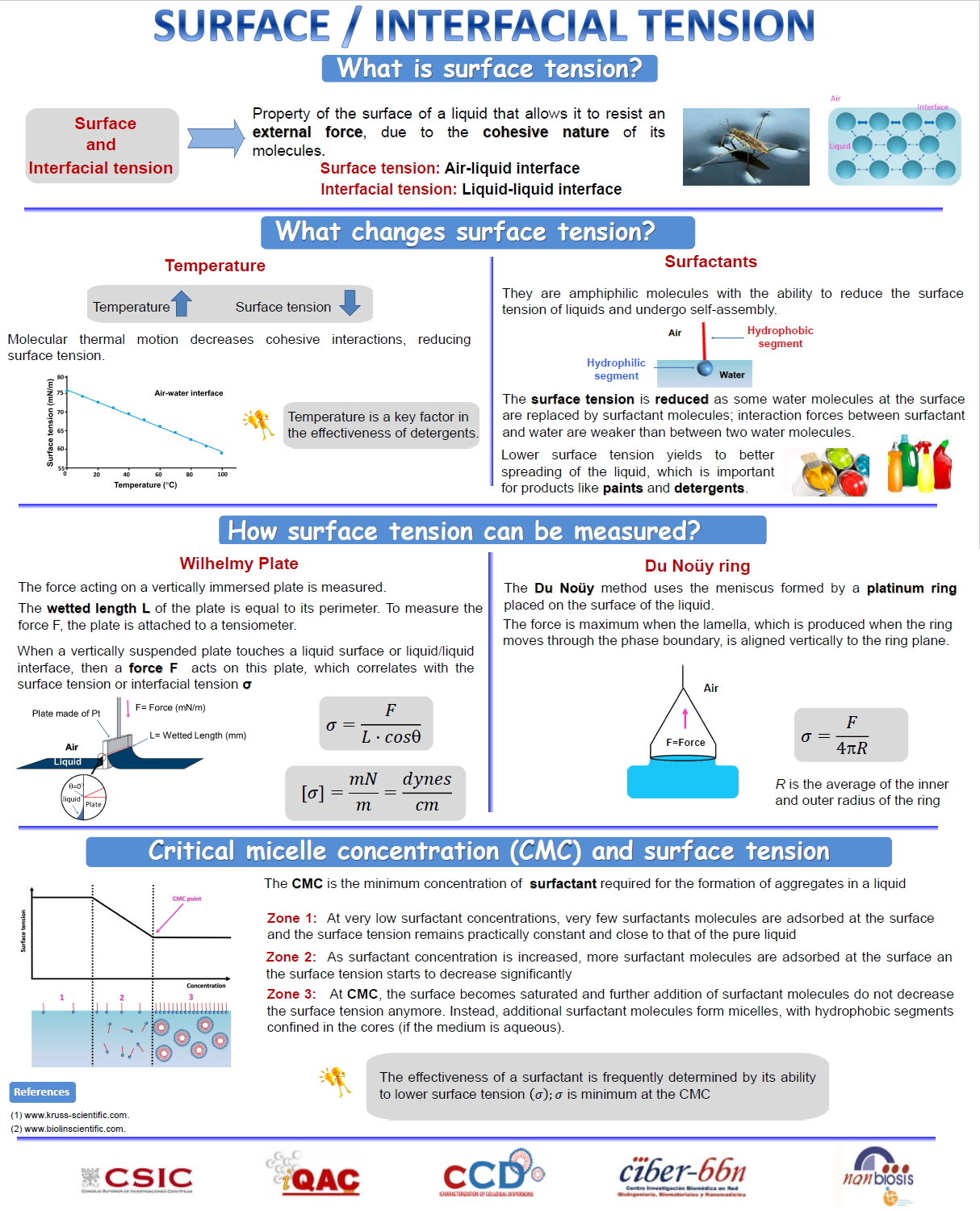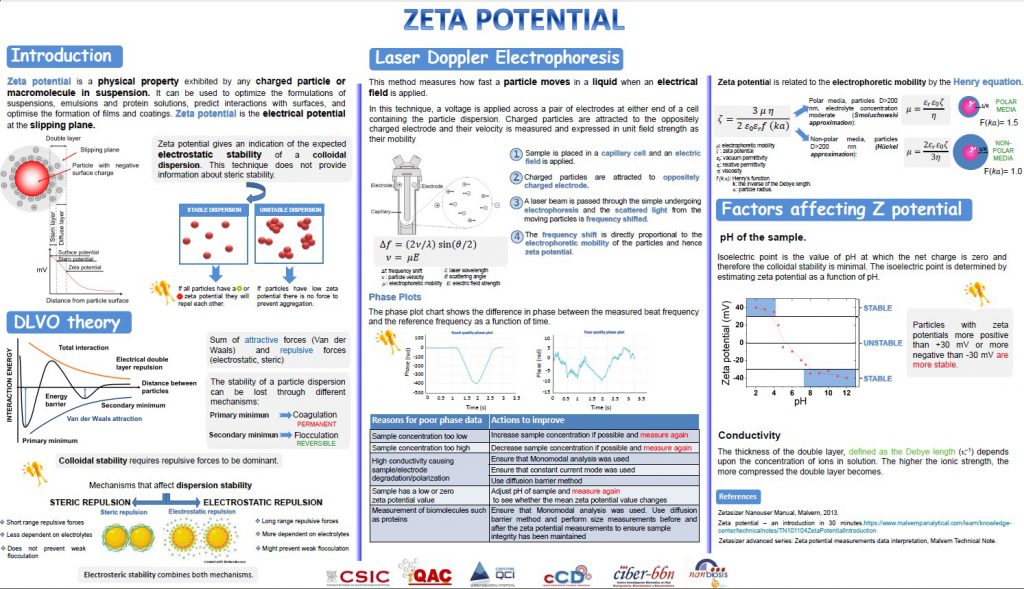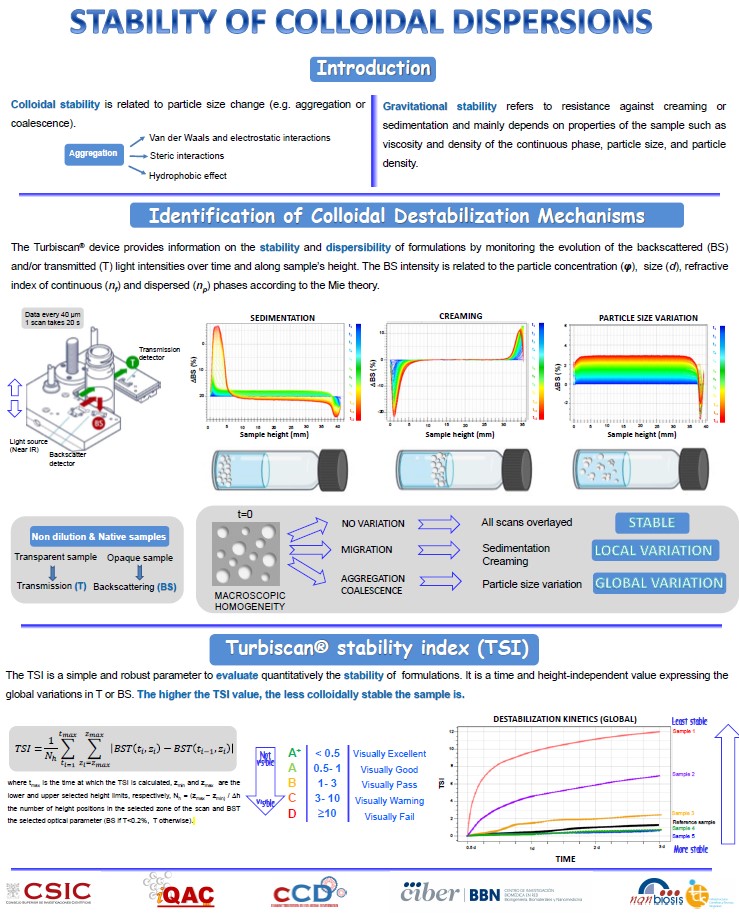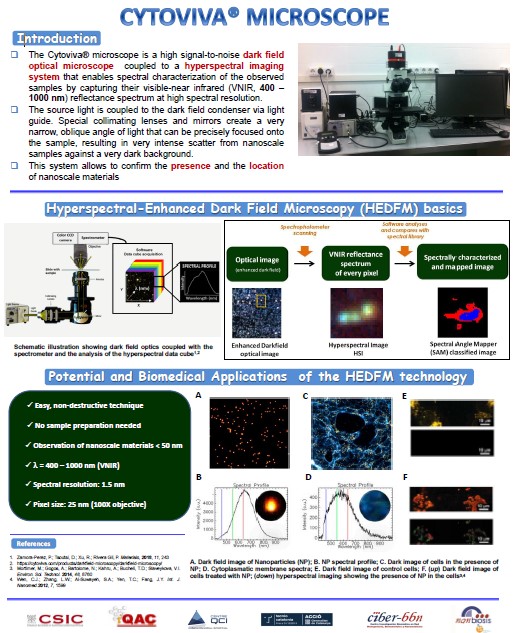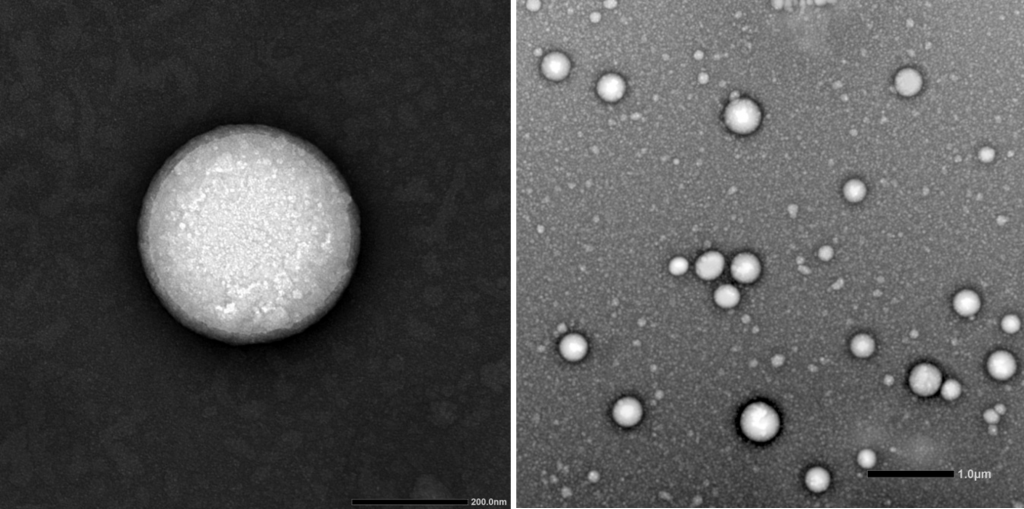U12-S04. Rheology, viscometry and densimetry
Rheology, viscometry and densimetry
For this service we offer a AR-G2 Rheometer with magnetic bearings which allows measuring torques down to 0.003 N.m. It can perform either stress controlled or strain controlled measurements. The angular velocity range is 2×10-7 to 628 rad/s. The maximum measurable torque is 200 mN.m, with a resolution of 0.1 nN.m. Several geometries are available, such as concentric cylinders, cone-plate, plate-plate (different sizes) and also cross hatched plates which are suitable to measure gel samples. Temperature is controlled with a Peltier system (from -20ºC to 200ºC) and with a Upper heating plate device. There is also an interfacial rheometry accessory. The instrument’s software enables to perform a wide variety of tests and analyses.
For standard tests we also offer a Brookfield viscometer with a wide measurement range from 25 mPa.s to 64 MmPa.s. It is equipped with an accessory (Small Sample Adaptor SSA) for samples of small volume (7-13.5 mL).
Customer benefits
- Specialized in colloidal samples
- ISO9001 certification for standard quality control system
- Highly qualified and continuously trained staff
- Adapted to customers’ needs
The services provided by the unit are very relevant for product formulation and quality control. Applications include determination of viscosities from flow curves (stress vs shear rate); estimation of storage (elastic) modulus and loss (viscous) modulus, creep assays, temperature ramps; Determination of gel and glass points; Estimation of interfacial viscosity and moduli.
Target customer
Public research organizations, academia and industry in the pharmaceutical, chemical, food and cosmetic sectors.
Additional information
For further details on Rheology, click on the following poster:
More information can be found at https://www2.iqac.csic.es/qci/









